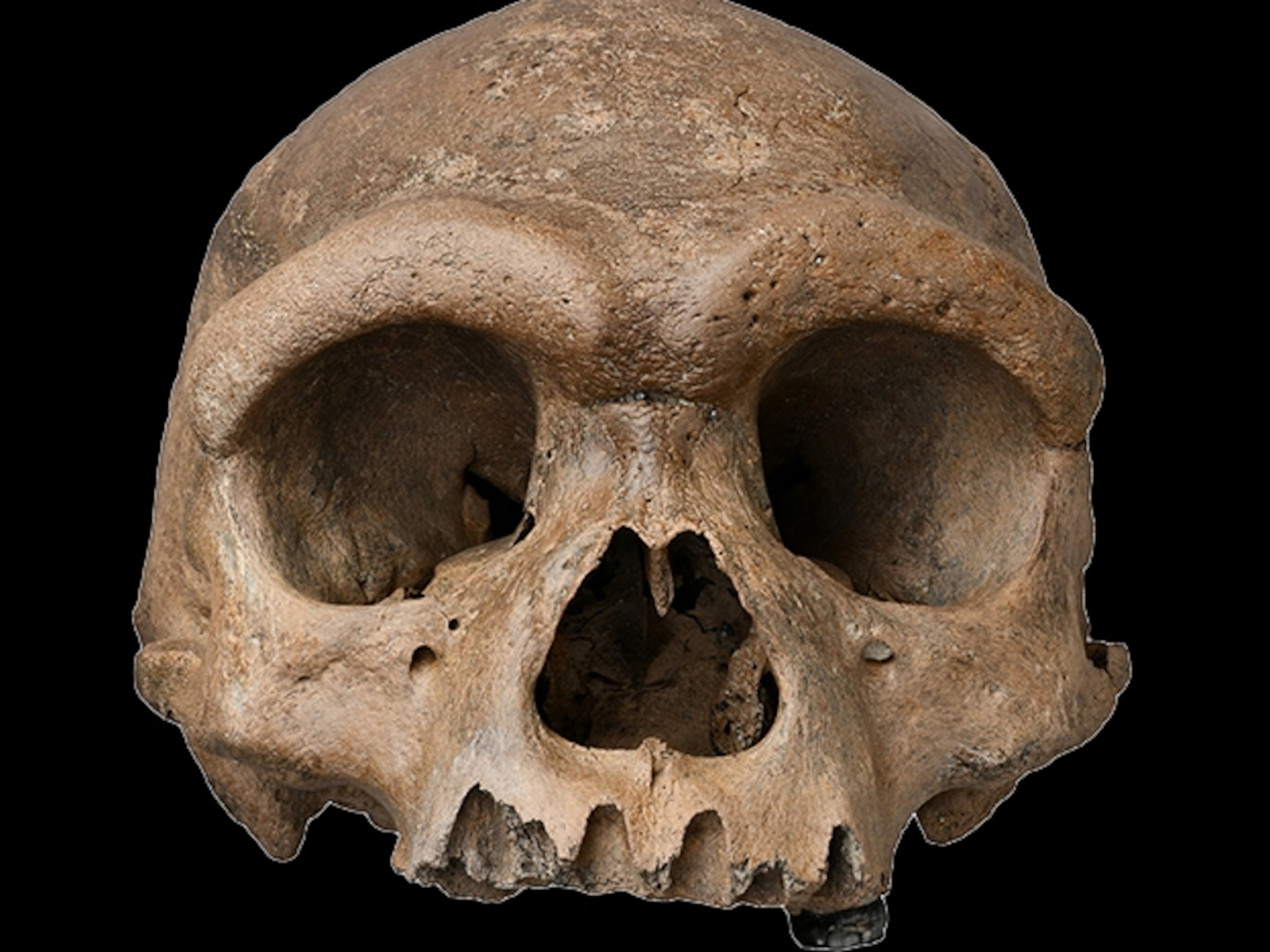
Human Evolution 101
Find out more about the origins of our species.
The origins of humankind have long fascinated scientists and the public alike—but the topic can get confusing. Here are answers to a few common questions.
Why are scientists certain that human evolution happened?
For a number of reasons. We share nearly 99 percent of our genetic sequence with chimpanzees and bonobos, which strongly suggests we share a common ancestor. And there are thousands of fossils documenting progressively more human-like species in the evolution of our lineage after it split from the other great apes and later from chimps and bonobos.
Biologists have actually observed evolution happening in other species, both in the field and in the lab—the recent emergence of antibiotic-resistant microbes is a form of evolution. And animal breeders make evolution happen all the time—think of the tremendous variety of dog breeds that have been created from wolves.
Is evolution at odds with the Bible?
Yes, if you think the Bible has to be interpreted literally. Evolution contradicts the Genesis story that God created all organisms in their present form. But you can believe in God without believing that the Bible is literally true.
So how does evolution work?
The DNA that makes up our genes, and those of every organism on Earth except some viruses, is subject to random mutation. Every now and then one of those mutations affects an important trait, such as an animal’s coat color or a particular behavior. Animal breeders selectively breed animals that have the traits they want; that’s artificial selection. In nature, the selection is done by the animal’s environment—and by the opposite sex.
If an animal is born with a coat color that offers more protection from predators, for instance, it could survive longer and produce more offspring. If a longer courtship display is more appealing to mates, that too could lead to greater reproductive success. Over time, such favorable mutations spread through a population and change how it looks. Over enough time, the process can even produce new species.
What are the major milestones in human evolution?
The human lineage diverged from that of apes at least seven million years ago and maybe as long as 13 million years ago. The earliest undisputed members of our lineage to regularly walk upright were the australopithecines, of which the most famous is Lucy’s species, Australopithecus afarensis. (Lucy herself is dated to 3.2 million years ago.) The oldest known fossil attributed to our genus, Homo, dates to about 2.8 million years ago and was reported just this year. The ability to make stone tools was once thought to be the hallmark of our genus. But the oldest stone tools are now thought to be 3.3 million years old. Either they were made by australopithecines like Lucy—or scientists simply haven’t yet found the early form of Homo that made them. Like australopithecines, early Homo species, such as H. erectus and H. habilis, walked on two legs.
There's considerable debate over when our ancestors first harnessed fire—it may have been anywhere from 1.8 million to around 800,000 years ago. According to one theory, the invention of cooking allowed us to gain more energy from meat, which fueled the dramatic evolution of the human brain. Bigger brains and more dextrous hands in turn were the prerequisite for the developments that set humans apart, including complex language, art, and agriculture, all of which emerged in the past 100,000 years.
Where did all this happen, and why does it matter where?
Both genetic and fossil evidence show that until relatively recently, human evolution happened in Africa. Whether the genus Homo first emerged in southern or in eastern Africa remains unclear. Knowing where our species evolved matters because the environment it adapted to helped shape the genetic makeup we still carry with us today. Where we came from is the first chapter in the long story of how we got to where we are now.
Around 60,000 years ago—again according to both genetic and fossil evidence—modern humans migrated out of Africa and began colonizing the world. Genetic evidence suggests that soon after leaving Africa, they interbred to some extent with the Neanderthals and a mysterious population in Asia called the Denisovans. Homo sapiens is now the only species of human on Earth. But that’s been true for less than 30,000 years.
Why haven’t scientists found a “missing link” between apes and us?
Because there isn’t one. Chimpanzees (or other apes) didn’t evolve into humans. Both lineages descended from a common ancestor and went their separate ways. The real question here is, who was that last common ancestor, the missing progenitor of both chimps and humans? We don’t know yet.
Is evolution over, for us or for the other apes?
Certainly not. Humans are continuing to evolve, but now the evolution is driven as much by our culture and the technology we’ve invented as by our biology. And other animals, including the apes, are also continuing to evolve—especially now, in response to the huge changes in their environment that humans have made.




